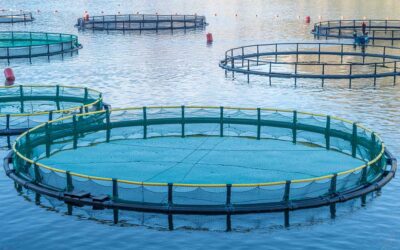Introduction
Behind every catch, every farm, and every export container in Australia’s seafood industry are people. The sector relies on a diverse workforce — from fishers and aquaculture technicians to logistics operators, marketers, and export managers. As the industry grows, so does its reliance on a healthy, skilled, and productive workforce.
But this is no simple task. Workforce development, wellbeing, and productivity are increasingly shaped by legal obligations and risks. Mental health is now recognised as a workplace safety issue. Employment law is evolving in response to casualisation, seasonal work, and training needs. Diversity and inclusion are not only good practice but legal requirements.
This article explores:
- The challenges facing the seafood workforce;
- The processes for workforce development and wellbeing;
- The legal risks businesses must navigate; and
- Practical steps to build a future-ready workforce while remaining compliant.
The Issue: Workforce Challenges in Seafood
Australia’s seafood workforce faces unique challenges compared to many industries. These include:
- Geographic isolation: Many seafood jobs are in regional and coastal communities with limited access to services.
- Seasonality and casualisation: Employment often fluctuates, making job security and entitlements complex.
- High-risk environments: Fishing and aquaculture are physically demanding and potentially hazardous.
- Diversity gaps: Women, First Nations people, and young workers are underrepresented.
- Wellbeing pressures: Mental health issues, including stress, fatigue, and isolation, are common.
Future trend: The industry’s competitiveness will increasingly depend on how well it attracts, trains, and retains skilled workers — while complying with evolving workplace laws.
Processes: Building a Future-Ready Workforce
Businesses and industry bodies are responding with initiatives such as:
- Training and Upskilling
-
- Partnerships with TAFEs and universities for aquaculture training.
- Apprenticeships and traineeships in seafood processing, logistics, and retail.
- On-the-job training programs funded by industry or government.
- Health and Wellbeing Programs
-
- Mental health awareness campaigns targeting fishers and aquaculture workers.
- Peer-support programs in regional communities.
- Workplace fatigue management systems.
- Diversity and Inclusion Initiatives
-
- Programs to recruit and retain women in seafood roles.
- Engagement with First Nations communities to build sea country employment.
- Youth-focused recruitment campaigns.
- Productivity and Retention Measures
-
- Incentives for long-term employees.
- Investment in safe and modern workplaces.
- Flexible rostering to improve work-life balance.
These processes aim to strengthen the workforce, but they also intersect with legal obligations and risks.
Legal Issues: What Businesses Must Watch
- Workplace Health and Safety (WHS)
-
- Mental health is now recognised under WHS law. Employers must address risks such as fatigue, isolation, and stress.
- Physical safety obligations remain critical in high-risk environments like fishing vessels and aquaculture farms.
- Regulators are increasingly active in prosecuting breaches.
Risk: Heavy fines, personal liability for directors, reputational damage.
- Employment Law and Entitlements
-
- Casualisation: Legal reforms are redefining casual employment. Workers who meet certain conditions may be entitled to permanent status and benefits.
- Seasonal work: Employers must ensure correct award coverage, overtime, and leave entitlements.
- Contract clarity: Vague contracts create disputes over entitlements and responsibilities.
Risk: Underpayment claims, Fair Work Ombudsman investigations, litigation.
- Diversity, Discrimination, and Inclusion
-
- Anti-discrimination laws prohibit unfair treatment based on gender, age, race, or disability.
- Recruitment and promotion practices must be merit-based and inclusive.
- Cultural awareness is increasingly expected when engaging with First Nations workers.
Risk: Legal claims for discrimination, loss of reputation, reduced access to government contracts.
- Training and Accreditation
-
- Training providers must meet regulatory standards.
- Employers who sponsor apprentices or trainees are legally responsible for providing proper supervision.
- Qualifications must align with national frameworks to be recognised.
Risk: Invalid qualifications, liability for inadequate training, breach of government funding rules.
- Workforce Wellbeing and Mental Health
-
- Employers must proactively manage psychosocial risks (stress, bullying, harassment).
- New WHS regulations specifically address psychosocial hazards.
- Duty of care extends to remote and isolated workers.
Risk: Increased liability if businesses fail to manage mental health as part of workplace safety.
Practical Steps for Businesses
Seafood operators can future-proof their workforce strategies by:
- Reviewing employment contracts to ensure clarity around entitlements, hours, and roles.
- Auditing WHS systems to include both physical and psychosocial risks.
- Investing in training programs that meet national accreditation standards.
- Implementing diversity policies and reviewing recruitment processes for inclusivity.
- Establishing wellbeing initiatives such as mental health first aid, fatigue management, and peer support.
- Engaging HR and legal advisors to ensure compliance with Fair Work and WHS laws.
Looking Ahead: The Legal Future of the Workforce
In the coming years, the seafood industry can expect:
- Stricter regulation of casual work: Laws will continue to push toward secure, permanent employment.
- Expansion of mental health obligations: Regulators will expect employers to show active prevention of psychosocial risks.
- Stronger enforcement of diversity obligations: Anti-discrimination regulators will focus on industries with low gender and cultural diversity.
- Integration of technology in HR: Digital platforms for rostering, payroll, and compliance will become the norm, raising data privacy and employment law issues.
For seafood businesses, the message is clear: a future-ready workforce is also a legally compliant workforce.
Conclusion
The strength of the seafood industry lies in its people. But building a healthy, skilled, and productive workforce is not just about training and wellbeing programs. It requires a strong legal foundation.
From workplace safety and mental health to employment law and diversity, the legal landscape for workforce management is rapidly changing. Businesses that prepare now will avoid costly disputes, build stronger teams, and secure their long-term future.
At Aquarius Lawyers, we work with seafood businesses to design employment contracts, manage workplace safety compliance, and build inclusive workforce strategies. Because in the seafood industry, people come first — and the law protects people.




